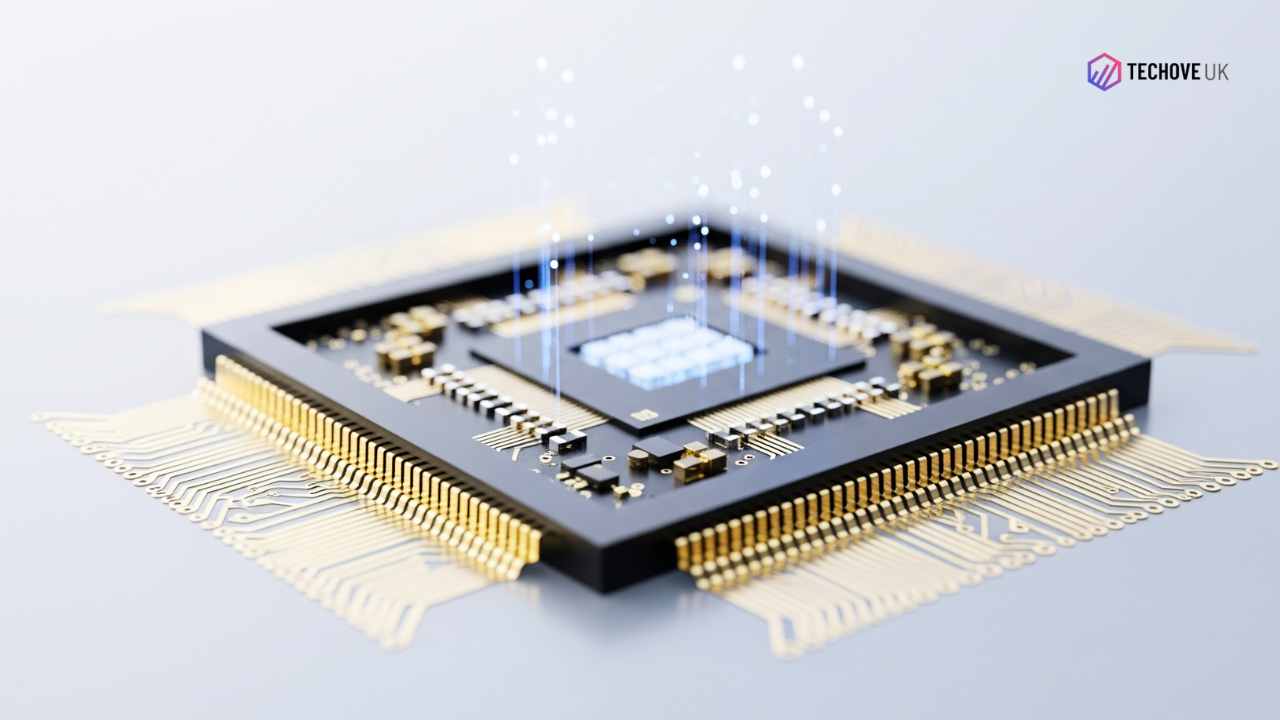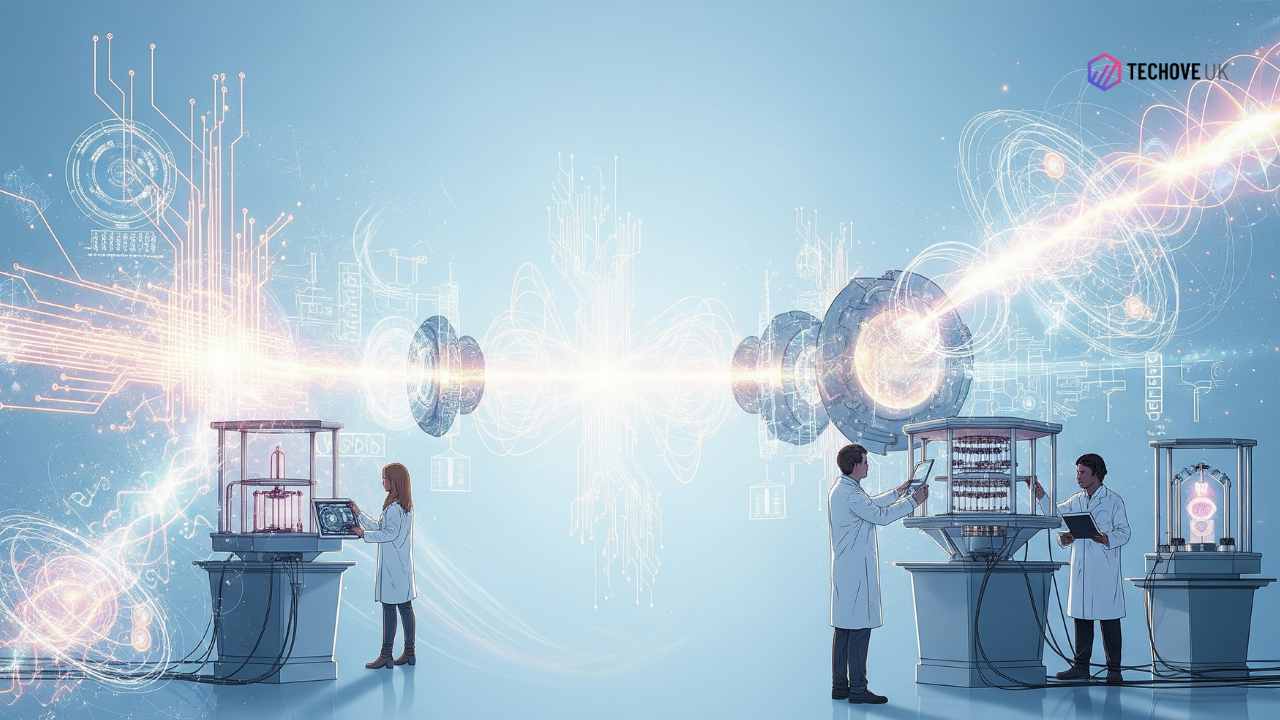Where Does Quantum Mechanics Exist in Real Life? A Guide for Professionals
(Image: A visually striking image combining everyday objects – a smartphone, a medical scanner, a solar panel – with abstract representations of quantum phenomena like superposition and entanglement. Think vibrant, not sterile.)
Did you know that the technology powering your smartphone, the medical imaging that saves lives, and even the energy from the sun rely on principles so bizarre they once baffled even Einstein? We’re talking about quantum mechanics. It sounds like something ripped from a science fiction novel, but it’s the fundamental theory describing the physical properties of nature at the scale of atoms and subatomic particles.
But where does this seemingly abstract world actually exist in our everyday lives? In this guide, we’ll explore the surprisingly pervasive presence of quantum mechanics, moving beyond the lab and into the technologies you use and benefit from daily. Whether you’re a seasoned engineer, a data scientist, or simply a professional curious about the future, you’ll walk away with a solid understanding of how quantum mechanics isn’t just a theoretical concept, but a practical reality.
The Quantum World: A Quick (and Simple!) Refresher
Before we dive into applications, let’s quickly touch on what makes quantum mechanics so…quantum. Imagine a light switch. It’s either on or off, right? That’s how things work in the “classical” world we experience. But in the quantum world, things aren’t so definite. A quantum bit, or qubit, can be both on and off at the same time – a concept called superposition. Think of it like a coin spinning in the air; it’s neither heads nor tails until it lands.
Then there’s entanglement. Imagine two of those spinning coins magically linked. If one lands on heads, the other instantly lands on tails, no matter how far apart they are. Einstein called this “spooky action at a distance” because it seemed to violate the laws of physics as he understood them.
These aren’t just weird thought experiments. These principles are the foundation for a revolution in technology. But how did we get from these mind-bending ideas to practical applications?
1. The Foundation: Transistors & Modern Electronics (The Unsung Quantum Hero)
Let’s start with something you use constantly: your computer, your phone, your tablet. All these devices rely on transistors, tiny switches that control the flow of electricity. And transistors? They wouldn’t work without quantum mechanics.
Think about it. Electrons, the particles that carry electricity, are governed by quantum rules. The behavior of electrons within semiconductors – the materials transistors are made from – is entirely explained by quantum mechanics. Concepts like energy bands and quantum tunneling (where electrons can pass through barriers they classically shouldn’t be able to) are crucial to transistor function.
Did you know that without understanding quantum mechanics, we’d still be stuck with bulky vacuum tubes? The miniaturization of electronics, the incredible processing power we take for granted, is a direct result of harnessing quantum phenomena. This isn’t a futuristic application; it’s the bedrock of the digital age.
2. Medical Marvels: MRI & PET Scans – Seeing Inside the Body
Imagine a doctor being able to see inside your body without surgery. That’s the power of medical imaging technologies like Magnetic Resonance Imaging (MRI) and Positron Emission Tomography (PET) scans. And guess what? Quantum mechanics is at their core.
MRI uses strong magnetic fields and radio waves to create detailed images of organs and tissues. The key lies in the spin of atomic nuclei – a quantum property. These nuclei act like tiny magnets, and their behavior in a magnetic field is governed by quantum mechanics. By manipulating these spins and detecting the signals they emit, doctors can create incredibly detailed images.
PET scans, on the other hand, detect gamma rays emitted by radioactive tracers injected into the body. The creation and detection of these gamma rays are also rooted in quantum processes, specifically the decay of atomic nuclei.
These aren’t just pictures; they’re life-saving diagnostic tools, and they wouldn’t exist without our understanding of the quantum world.
3. Lasers: From Barcode Scanners to Fiber Optic Communication
Ever scanned a product at the grocery store? Used a DVD player? Received data through fiber optic cables? You’ve interacted with lasers. And lasers are fundamentally quantum devices.
The word “laser” stands for Light Amplification by Stimulated Emission of Radiation. That “stimulated emission” part? That’s pure quantum mechanics. It involves electrons transitioning between energy levels within atoms, releasing photons (particles of light) in a coherent and focused beam.
Lasers are used in countless applications:
Telecommunications: Fiber optic cables use lasers to transmit data at incredibly high speeds.
Manufacturing: Lasers are used for precision cutting and welding.
Medicine: Lasers are used in surgery, eye correction, and skin treatments.
Scientific Research: Lasers are essential tools for spectroscopy and other analytical techniques.
4. Solar Cells: Harnessing the Quantum Power of Light
The sun provides a massive amount of energy, and solar cells are designed to capture that energy and convert it into electricity. But the process isn’t as simple as just “absorbing sunlight.” It relies on the photoelectric effect – a quantum phenomenon where photons knock electrons loose from atoms, creating an electric current.
When a photon strikes a semiconductor material in a solar cell, it transfers its energy to an electron. If the photon has enough energy, the electron jumps to a higher energy level and becomes free to move, contributing to the electric current. The efficiency of solar cells is directly related to understanding and optimizing this quantum process.
Did you know that researchers are exploring new materials and quantum effects to create even more efficient solar cells? Quantum dots, for example, are nanoscale semiconductors that can be tuned to absorb specific wavelengths of light, potentially boosting solar cell efficiency.
5. LEDs & Displays: Quantum Efficiency in Lighting
Light Emitting Diodes (LEDs) are rapidly replacing traditional incandescent and fluorescent lights. They’re more energy-efficient, longer-lasting, and offer a wider range of colors. And, you guessed it, they rely on quantum mechanics.
LEDs work by a process called electroluminescence. When an electric current passes through a semiconductor material, electrons recombine with “holes” (the absence of electrons), releasing energy in the form of photons. The color of the light emitted depends on the energy gap between the electron and hole, a property determined by quantum mechanics.
The efficiency of LEDs – how much light they produce for a given amount of energy – is a direct result of optimizing these quantum processes. The vibrant displays on your smartphones and TVs also benefit from advancements in quantum dot technology, enhancing color accuracy and brightness.
The Future is Quantum: What’s on the Horizon?
These are just a few examples of how quantum mechanics already impacts our lives. But the real revolution is just beginning. Here are a few areas where quantum technology is poised to make a massive impact:
Quantum Computing: Harnessing superposition and entanglement to create computers that can solve problems currently intractable for even the most powerful supercomputers. This could revolutionize fields like drug discovery, materials science, and financial modeling.
Quantum Cryptography: Developing unbreakable encryption methods based on the laws of quantum physics, ensuring secure communication.
Quantum Sensors: Creating incredibly sensitive sensors that can detect tiny changes in magnetic fields, gravity, and other physical quantities, with applications in medical diagnostics, environmental monitoring, and navigation.
Quantum Materials: Designing new materials with exotic properties based on quantum phenomena, leading to breakthroughs in energy storage, superconductivity, and more.
Conclusion: A Quantum World All Around Us
So, where does quantum mechanics exist in real life? The answer is: everywhere. It’s not confined to the realm of theoretical physics; it’s the engine driving much of the technology we rely on every day. From the devices in our pockets to the medical treatments that save lives, quantum mechanics is shaping our world in profound ways.
Understanding these principles isn’t just for physicists anymore. As professionals in various fields, recognizing the power of quantum mechanics can unlock new opportunities for innovation and problem-solving. The quantum revolution is here, and it’s time to embrace the possibilities.
(Call to Action: Link to further resources – articles, videos, courses – on quantum mechanics and its applications. Encourage readers to share the article and engage in discussion.)



